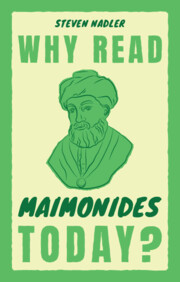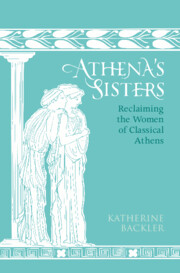Refine search
Actions for selected content:
3387640 results

Culture and Mass Schooling
- The Colonial Roots of Educational Inequality in Africa
- Coming soon
-
- Expected online publication date:
- January 2026
- Print publication:
- 31 January 2026
-
- Book
- Export citation
Christology and Ethics in Galatians
- Love and the Shared Self
- Coming soon
-
- Expected online publication date:
- January 2026
- Print publication:
- 31 January 2026
-
- Book
- Export citation

Art and Anti-Racism in Latin America
- Coming soon
-
- Expected online publication date:
- January 2026
- Print publication:
- 31 January 2026
-
- Book
- Export citation

The Failures of Others
- Justifying Institutional Expansion in Comparative Public and International Law
- Coming soon
-
- Expected online publication date:
- January 2026
- Print publication:
- 31 January 2026
-
- Book
- Export citation

Coastal Gothic, 1719–2020
- Coming soon
-
- Expected online publication date:
- January 2026
- Print publication:
- 31 December 2025
-
- Element
- Export citation

Darwin's Philosophy of Emotion
- Coming soon
-
- Expected online publication date:
- January 2026
- Print publication:
- 31 January 2026
-
- Book
- Export citation

After Fission
- Recognition and Contestation in the Atomic Age
- Coming soon
-
- Expected online publication date:
- January 2026
- Print publication:
- 31 January 2026
-
- Book
- Export citation
The Other Nepal
- Alterity in Nepali Literature and Culture
- Coming soon
-
- Expected online publication date:
- January 2026
- Print publication:
- 28 February 2026
-
- Book
- Export citation

Why Read Maimonides Today?
- Coming soon
-
- Expected online publication date:
- January 2026
- Print publication:
- 31 January 2026
-
- Book
- Export citation
The Coveted Mount
- The Horse in South Asian History
- Coming soon
-
- Expected online publication date:
- January 2026
- Print publication:
- 01 April 2027
-
- Book
- Export citation

Taxing People
- The Next One Hundred Years
- Coming soon
-
- Expected online publication date:
- January 2026
- Print publication:
- 31 January 2026
-
- Book
- Export citation
Meteorology and Climate of the Southern Hemisphere
- Coming soon
-
- Expected online publication date:
- January 2026
- Print publication:
- 31 January 2026
-
- Book
- Export citation
Cambridge Companion to the Indian Constitution
- Coming soon
-
- Expected online publication date:
- January 2026
- Print publication:
- 01 April 2027
-
- Book
- Export citation
The Cambridge Companion to Rammohun Roy
- Coming soon
-
- Expected online publication date:
- January 2026
- Print publication:
- 01 April 2027
-
- Book
- Export citation
Design, Production and After-lives
- Three Godrej Objects and the History of Modern India
- Coming soon
-
- Expected online publication date:
- January 2026
- Print publication:
- 01 April 2027
-
- Book
- Export citation
Cold War Liberalism
- Power in a Time of Emergency
- Coming soon
-
- Expected online publication date:
- January 2026
- Print publication:
- 31 January 2026
-
- Book
- Export citation
Testimony, Faith and Religion in Early Modern English Literature
- Making Belief
- Coming soon
-
- Expected online publication date:
- January 2026
- Print publication:
- 31 January 2026
-
- Book
- Export citation

The Cambridge Companion to the Spanish Inquisition
- Coming soon
-
- Expected online publication date:
- January 2026
- Print publication:
- 31 January 2026
-
- Book
- Export citation

Catholicism: End or Beginning?
- Coming soon
-
- Expected online publication date:
- January 2026
- Print publication:
- 15 January 2026
-
- Book
- Export citation

Athena's Sisters
- Reclaiming the Women of Classical Athens
- Coming soon
-
- Expected online publication date:
- January 2026
- Print publication:
- 31 January 2026
-
- Book
- Export citation
